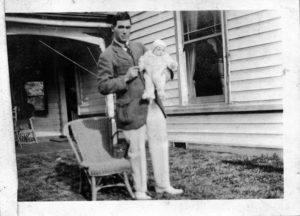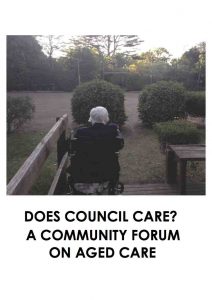Published in Courier Mail on 27 March 2017
Last month the Courier Mail reported yet another heart breaking story about aged care homes (Aged care nightmare: man’s scrotum ‘left bleeding’, 20th February). Many of us were shocked because we assume elderly Australians receive high quality care in aged care homes.
The Federal Government is promoting its reforms in the aged care sector as supporting a consumer driven and market-based system. However, the “consumers” in aged care homes are often frail, elderly people, many with dementia. How can they demand a high quality service on the free market?
There are around 2,600 aged care homes in Australia. Although some are excellent, many aged care homes operate without enough staff. Managers who are under pressure to meet their profit targets do so by reducing staff, placing vulnerable residents at risk.
Staff in aged care homes are often hard-working, dedicated people doing a very difficult job for not much pay. When an aged-care home has insufficient staff, there may not be time for staff to walk residents to the toilet or even help them out of bed. All too often relatives feed, shower and dress residents because staff are too busy.
A key to quality healthcare is a good staff-patient ratio. However, unlike hospitals, there is no federal legislative requirement for aged-care homes to have mandated staff-to-resident ratios or skill prerequisites. The decision whether to have a registered nurse on duty is at the discretion of the provider.
When registered nurses are on duty in aged care homes, residents have better health outcomes, a higher quality of life and fewer hospital admissions. However, registered nurses now account for less than 27% of this workforce, while personal care attendants make up 68%.
Some personal-care attendants gained their qualification to work in an aged care home after completing a five-week course. It is inconceivable that someone with only five weeks of training is qualified to provide competent care, particularly when there is no registered nurse on duty to supervise them. Is it any wonder relatives’ submissions to recent inquiries into aged care have highlighted inadequate personal care, neglect, and negligence?
Relatives complain because residents’ needs are unmet – when incontinence pads are not changed regularly, when bruises appear or skin tears, and when pressure sores are not treated appropriately, in some cases turning gangrenous. Complaints are also made when residents suffer from malnutrition and/or dehydration and are chemically restrained. The list goes on.
The accreditation process should play an important part in monitoring the standards of care in all aged-care homes, including whether adequate numbers of skilled staff are employed. The current accreditation standards are woefully inadequate.
Coronial inquests into separate deaths at two aged care homes in Melbourne, BUPA Kempsey and Arcare Hampstead, exposed inadequate care. Yet both BUPA Kempsey and Arcare Hampstead were fully accredited by the regulator, the Aged Care Quality Agency, with perfect scores of 100 per cent in all criteria. This suggests something is wrong with the accreditation processes.
Following the coronial inquiries, the Aged Care Quality Agency did not change the accreditation processes. Vague phrases such as “sufficient staff” continue to be used. In some cases, sufficient staff means no registered nurse on duty. It may also mean an inadequate number of personal-care attendants.
When taxpayers are subsidising the care of elderly people, the public’s investment needs to be protected in the form of regulation, mandated staff ratios and a rigorous accreditation system. The care of vulnerable older people is too important to be left to the whims of the free market.
Published in Courier Mail on 27 March 2017


